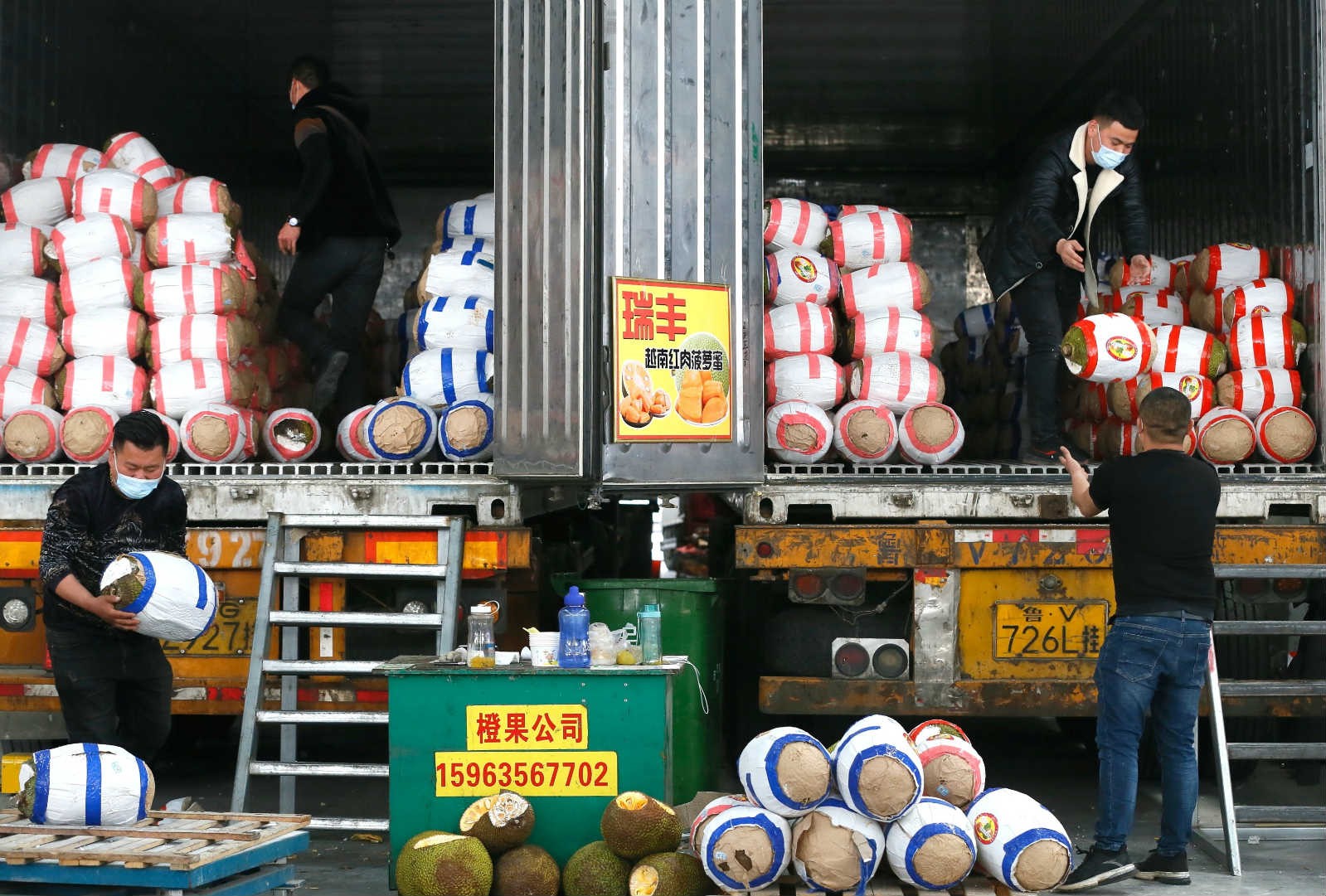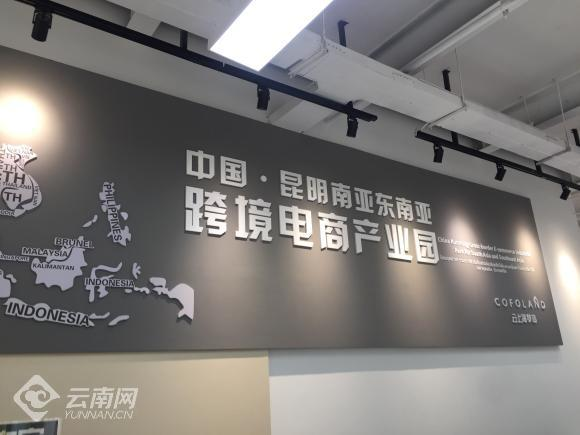Cross-border e-commerce helps speed economic recovery in Southeast Asia

Photo taken on April 27 shows workers unloading jackfruits transported from Vietnam at an international agricultural and sideline products trading center in Qingdao, east China''s Shandong province. (Photo by Liang Xiaopeng/People''s Daily Online)
Although it was weekend, workers were still busy sorting express parcels shipped from overseas to Thailand at a warehouse of TPI Import-Export & Shipping. Co., Ltd. located on the outskirts of Bangkok, capital city of Thailand. A large number of the parcels were goods ordered via e-commerce platforms.
The number of express delivery parcels from online shopping platforms has risen significantly this year, said a worker at the warehouse, adding that they have been short-handed because of the increased workload, and that sometimes when they couldn’t deliver parcels in time people who want to receive their products quickly would drive to the warehouse to pick up their parcels.
"Due to the COVID-19, I mostly shopped online during the first half of the year," said a resident in Bangkok, adding that the number of orders she has placed on e-commerce platforms such as Shopee and Lazada has increased significantly compared with the previous years.

Residents in Ganyu district, east China''s Jiangsu province, buy characteristic fruits including longan, grapefruit, durian, areca nut, rambutan, Red Delicious apples, and guava imported from Southeast Asian countries including Thailand, Vietnam, Singapore and Malaysia at a supermarket. (Photo by Si Wei/People''s Daily Online)
Global management consulting firm Bain & Company predicted that the number of online shoppers in Southeast Asia is expected to reach 310 million this year, doubling that of the previous year.
In 2019, the size of the e-commerce market in Southeast Asia reached $38 billion, according to a report jointly released by Google, Temasek and Bain & Company, suggesting that the figure may exceed $153 billion by 2025.
The booming e-commerce is becoming an important driver for promoting economic recovery in Southeast Asia.
China and Southeast Asian countries have always worked closely in cross-border e-commerce, providing strong support for the economic recovery in Southeast Asia.
Many featured local products in Southeast Asia, including Thai coconuts, Malaysian Musang King durians and mangoes of Myanmar, have been introduced to China through e-commerce platforms and become increasingly popular among Chinese consumers.

Photo shows the China (Kunming) cross-border e-commerce industrial park for South Asia and Southeast Asia in Kunming, southwest China''''s Yunnan province. (Photo/Yunnan.cn)
Since the beginning of this year, trade between the Association of Southeast Asian Nations (ASEAN) and China has bucked the trend of economic recession brought about by the COVID-19 pandemic and shown a good momentum of growth, in which cross-border e-commerce has played a key role.
Besides engaging in cross-border trade on e-commerce platforms, Chinese companies have also brought experience, mature technologies and operation models to the Southeast Asian e-commerce market, which is still in the early stage of development, helping to improve local e-commerce technology, logistics and payment systems.
In the meantime, they have introduced livestreaming and other emerging marketing models into Southeast Asia.
Established in 2012, Lazada has expanded its business to Indonesia, Malaysia, the Philippines, Singapore, Thailand and other Southeast Asian countries.
In 2016, China's e-commerce giant Alibaba invested in Lazada and acquired control of the company. Since then, Alibaba has upgraded the entire platform with new technologies and set up over 30 warehousing centers in a dozen cities in Southeast Asia to improve the "last mile" logistics capability of the platform.
Chinese companies have also enabled the platform to adopt a variety of payment methods to meet the diverse demands of consumers.

Photo taken on June 29 shows the opening ceremony of TusHoldings Lazada cross-border eco-innovation service center (Nanning) and the launching ceremony of the first TusHoldings Lazada Southeast Asian cross-border livestreaming talent competition (2020) held in the Nanning Comprehensive Bonded Zone in Nanning, south China’s Guangxi Zhuang autonomous region. (Photo/Chinadaily.com.cn)
Lazada has now developed into one of the largest e-commerce platforms in the ASEAN region, with its number of annual active consumers exceeding 50 million.
Chinese companies have also strengthened e-commerce cooperation with their counterparts in Southeast Asian countries in many other areas.
Alibaba has built the Electronic World Trade Platform together with Thailand and Malaysia, aiming to facilitate digital customs declaration and clearance for small and medium-sized merchants and thus shortening logistics time.
Chinese e-commerce giant JD.com and Central Group, a leader in retail and service business in Thailand, have jointly established an online shopping platform named JD Central, which has become one of the top 10 online shopping platforms in Thailand.
The year 2020 has been designated as the China-ASEAN Year of Digital Economy Cooperation, during which e-commerce has become, without doubt, a new highlight of China-ASEAN digital economy cooperation.
The proportion of digital economy in ASEAN’s GDP will increase from 1.3 percent in 2015 to 8.5 percent in 2025, predicted Dato Lim Jock Hoi, secretary-general of the ASEAN.
China is at the forefront of the development of digital infrastructure and is an important partner of ASEAN in its efforts to promote digital economy in the region, said Lim.
Southeast Asian countries should take advantage of the China-ASEAN Year of Digital Economy Cooperation to carry out exchanges and cooperation with China in the field of e-commerce, so as to further improve the e-commerce development pattern in Southeast Asia and speed up the recovery of regional economy, said an associate professor at the Faculty of Economics, Thammasat University in Thailand.


